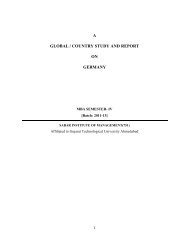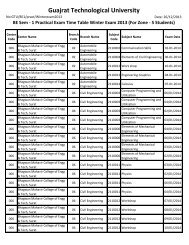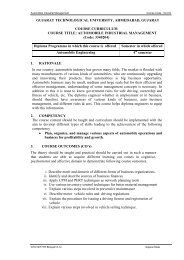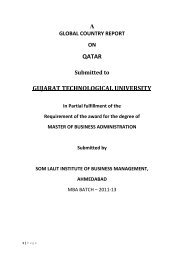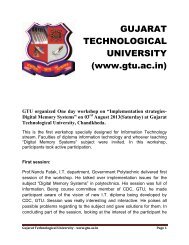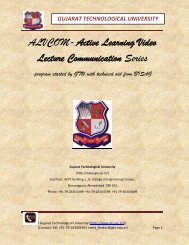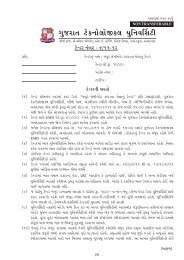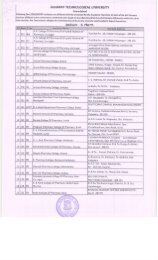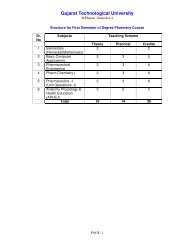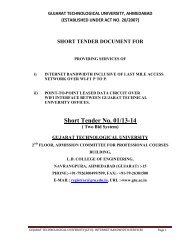792-Dr. J. K. Patel Institute Of Management - Gujarat Technological ...
792-Dr. J. K. Patel Institute Of Management - Gujarat Technological ...
792-Dr. J. K. Patel Institute Of Management - Gujarat Technological ...
You also want an ePaper? Increase the reach of your titles
YUMPU automatically turns print PDFs into web optimized ePapers that Google loves.
cluster. UAE location supports growth in the emerging Asian markets, while local<br />
market consumption is still very limited compared to the European region. The<br />
following section details the competitiveness drivers and.<br />
Factor Conditions<br />
Feedstock<br />
Ethylene is the main building block for petrochemical industries, which is produced<br />
from a variety of feedstock that determines petrochemical cost structure and industry<br />
margins. Naphtha is the main feedstock used in Europe and Asia produced from<br />
refineries and offers higher proportion of co-products e.g. propylene and butadiene,<br />
which benzene can be extracted from. However, Abu Dhabi as well as other<br />
producers in GCC region generate ethylene from gases such as ethane, propane<br />
and butane; a process that does not require a refinery (but it limits the proportion of<br />
co-products) which give Abu Dhabi and GCC countries a cost advantage for setting<br />
up petrochemical facilities over other regions. Ethane prices are linked to<br />
international prices of oil. However, it is difficult to for Abu Dhabi and GCC countries<br />
to determine the actual cost of ethane exactly as it is integrated with the upstream oil<br />
and gas sectors.<br />
The ethane price in Abu Dhabi is estimated at around $1.5/MMBTU compared to<br />
$0.75/MMBTU in Saudi Arabia, $1/MMBTU in Kuwait, $1.5/MMBTU in Qatar (Diwan,<br />
2009). Regionally, Abu Dhabi has no cost advantage over ethane feedstock.<br />
However it has very significant cost advantage over Western Europe and USA by a<br />
factor of 3. The ethylene cost of production from ethane in Abu Dhabi is not known,<br />
but it should be little higher than Saudi Arabia ($114/ton) and Qatar ($170/ton), and<br />
remains superior over other regions where prices stand at above $400/ton (Diwan,<br />
2009). Propylene (PE) and Polypropylene (PP) cost structure is derived form<br />
cracking processes where cost advantage could be gained from close proximity to<br />
markets and efficient operations that could be of stretch for state owned enterprises.<br />
Therefore, the competitiveness of Abu Dhabi comes mainly from cracking<br />
inexpensive ethane but as well as location due to its close proximity to growing<br />
markets in Asia. Although Abu Dhabi has the world’s fourth largest oil reserves and<br />
fifth largest natural gas reserves, it became a net importer of gas in 2007 due to high<br />
Parul <strong>Institute</strong> of <strong>Management</strong> and Research - <strong>792</strong> Page 90



